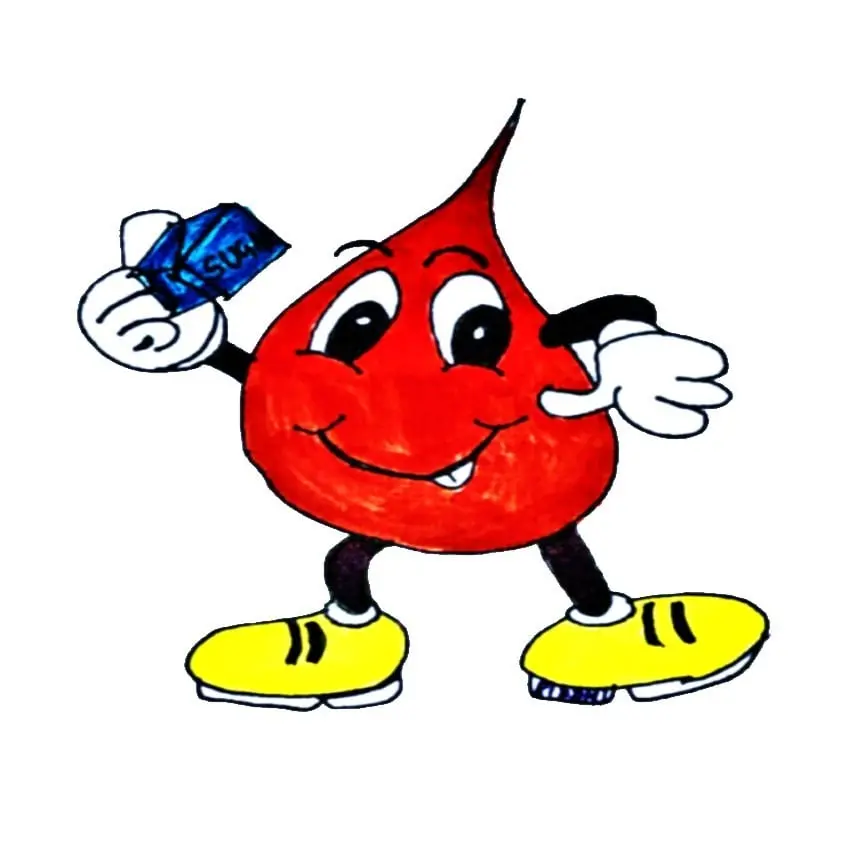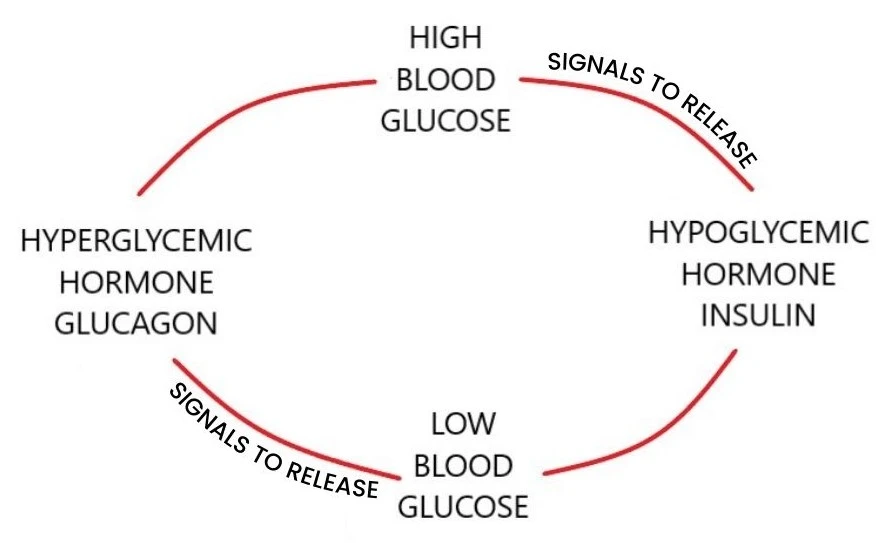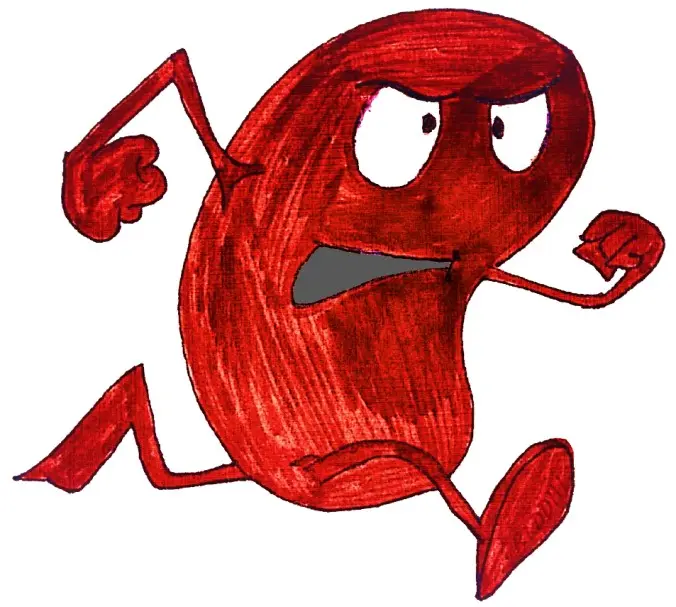
It is essential to maintain Normal Blood Glucose level for each and every single person.
If sugar level in blood is not maintained or regulated, it may lead to many fatal disease condition eventually.
In this post you can learn what is NORMAL SUGAR GLUCOSE LEVEL?
What are the Physiological processes that regulates the Glucose level in Blood?
What are the Hormones that maintains Hypoglycemic or Hyperglycemic Conditions in Blood?
In our previous post, HORMONES OF PANCREAS you can learnt about Insulin and Glucagon Hormones.
So, on that basis you can further understand that how these hormones help in maintenance of normal blood sugar level.
So, let’s get started.
[Note: words with (*) are defined separately at the end of this post.]
NORMAL BLOOD GLUCOSE LEVEL
In a healthy person, Blood Sugar level is controlled in limited range.
• In early morning after overnight fasting*– 70 to 110 mg/dL of blood.
• First & second hour after meals (postprandial*)- 100 to 140 mg/dL.
• Brought back to normal at end of two hours after the meals.
Sugar level is necessarily maintained within physiological limits.
If it goes above the normal range it’s called HYPERGLYCEMIA.
If it goes below the normal range it’s called HYPOGLYCEMIA.
After ingestion of carbohydrate meal, it may rise up to 120-140 mg/dL.
Mainly 3 factors are involved in homeostasis* of blood sugar level.
1) Hormones
2) Metabolic processes
3) Renal control mechanisms
HORMONES AND METABOLIC PROCESSES
Liver is the primary organ for maintaining glucose concentration in blood.
It can rapidly absorb & release glucose as it’s concentration changes.
The absorption & release of glucose by liver is mainly regulated by two hormones.
1) Insulin (Hypoglycemic hormone).
2) Glucagon (Hyperglycaemic hormone)

Maintenance of glucose in fed state* (hyperglycaemic condition)
Normally Blood Sugar level increases after each meal, which can be called Postprandial Hyperglycemia.
Now, this increased blood sugar level releases Insulin hormone by β-cells of Islets of Langerhans from Pancreas.
Insulin reduces Blood sugar level in many ways.
- It stimulates active transport* of Glucose across the cell membrane of muscles & adipose tissues(fat) but not in Liver.
- Because In Liver Glucose is freely permeable so, it is rapidly absorbed.
- In Liver, Insulin increases the use of Glucose by process of Glycolysis by inducing synthesis of key Glycolytic enzymes:
-Glucokinase
-Phosphofructokinase
-Pyruvate kinase.
- In liver & muscles, Insulin stimulates Glycogenesis* (by stimulating Glycogen synthetase enzyme) & so leading to suppression of Glycogenolysis*.
- Insulin inhibits Gluconeogenesis* by suppressing action of key enzymes.
- In adipose tissue, glucose is converted into Glycerol-3-phosphate, which is required for Triacylglycerol (lipogenesis) formation.
- Insulin enhances synthesis of protein & decreases Protein catabolism, so this is how it releases Amino acids.
Maintenance of blood glucose in fasting state (hypoglycemic condition)
When Blood Glucose level decreases, certain Hyperglycaemic Hormones gets released,
e.g.1) Glucagon
2) Epinephrine/Adrenaline
4) Growth Hormone & ACTH
5) Thyroxine.
So, lets learn about them step by step in brief.
1) GLUCAGON
Glucagon is a hormone produced by α-cells if Islets of Langerhans in pancreas.
Its actions are opposite of the actions of Insulin.
It acts primarily on Liver.
- In liver, it stimulates Glycogenolysis by activating enzyme Glycogen Phosphorylase & inhibits Glycogen synthesis.
- Not like Epinephrine, Glucagon doesn’t have effect on muscles due to lack of receptors.
- Glucagon enhances Gluconeogenesis from amino acids & lactic acids by inciting action of Gluconeogenesis.
2) EPINEPHRINE/ ADRENALIN
This hormone is secreted from Adrenal Medulla.
In liver & muscles It stimulates Glycogenolysis.
- In Liver, Glucose is the main product so it leads to increase in Blood Glucose level.
- In muscles, as Glucose-6-phosphatase* enzyme is absent, Glycogenolysis results with the formation of Lactic acid.
3) GLUCOCORTICOIDS
This hormone is secreted from Adrenal Cortex.
It causes Gluconeogenesis by increasing enzyme activities.
It causes catabolism* of Protein to provide glucogenic amino acids for Gluconeogenesis.
It increases absorption of amino acids from liver for Gluconeogenesis.
Glucocorticoids also inhibits the usage of Glucose in extrahepatic tissues.
4) GROWTH HORMONE & ACTH
Its all actions are opposite of Insulin as it increases blood Glucose level.
Growth hormone decreases Glucose uptake in muscles.
ACTH decreases utilization of Glucose by tissues.
5) THYROXINE
A hormone secreted by Thyroid gland.
It increases the rate of Glycogenolysis in liver and causes rise in Blood Glucose level.
It also increases absorption rate of Hexoses from intestine.

RENAL CONTROL MECHANISMS
- When blood Sugar/Glucose level rises to comparatively high levels, kidneys also exerts regulatory effect.
- Normally Glucose in blood is continuously being filtered by glomeruli in kidneys and reabsorbed completely in renal tubules. But capacity of this tubular system to reabsorb Glucose is limited.
- If Glucose level in blood is raised above 180 mg/100 ml, complete reabsorption of Glucose from tubules does not occur, so extra amount of Glucose appears in urine, which is known as Glycosuria.
- 180 mg/100 ml is limiting level of glucose in blood, above that
tubular reabsorption does not occur, so this level is known as Renal
Threshold value for Glucose. - Thus, by excreting extra amount of Glucose in urine in Hyperglycaemic state and reabsorbing Glucose during Hypoglycemic state, kidneys help in regulating normal Glucose level in blood.
